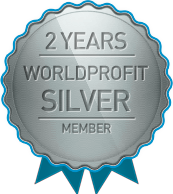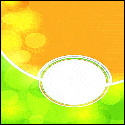Opportunities
» Home Business» Free Associate Membership
Products and Services
» Super Solo Ads» Extreme Traffic Pack
» 18 Memberships FREE for LIFE
Free Stuff
» FREE Autoresponder!» Internet Marketing For Newbies
» Solo Blast To 30,000 FREE
Free Traffic Packages
» 500,000 Mega Ad Credits» Promote To ONE Million
Brought To You By
Arlen Castenada

Published by: Arlen "Buddy" Castenada on 13-Jul-24
Clinical depression and reactive depression, explained
Clinical depression and reactive depression are both forms of depression, but they differ in their causes and sometimes in their treatment approaches. Here’s a breakdown of the differences:
Clinical Depression (Major Depressive Disorder)
- Definition: Clinical depression, also known as major depressive disorder (MDD), is a mental health condition characterized by persistent feelings of sadness, hopelessness, and a lack of interest or pleasure in most activities.
- Causes: The exact cause is not fully understood but it is believed to be due to a combination of genetic, biological, environmental, and psychological factors. It can occur without any specific external trigger.
- Symptoms: Symptoms must last for at least two weeks and include changes in appetite or weight, sleep disturbances (insomnia or hypersomnia), fatigue or loss of energy, feelings of worthlessness or excessive guilt, difficulty concentrating or making decisions, and recurrent thoughts of death or suicide.
- Treatment: Treatment often includes antidepressant medications combined with psychotherapy. Lifestyle changes such as exercise and diet may also be recommended.
Reactive Depression (Situational Depression)
- Definition: Reactive depression is a type of adjustment disorder with depressed mood that occurs as a direct response to an identifiable stressful event or situation.
- Causes: Triggered by external events such as the loss of a loved one (bereavement), divorce, job loss, financial problems, trauma from an accident or natural disaster.
- Symptoms: Similar to clinical depression but directly linked to the stressful event. Symptoms typically appear within three months after the stressor occurs and may include sadness that seems disproportionate to the event's impact on others' lives.
- Duration: Symptoms usually resolve once the individual adapts to the new situation; however if symptoms persist beyond six months after removal from stressor it might be re-evaluated for other types like MDDTreatment:** Psychotherapy**, particularly cognitive-behavioral therapy (CBT) can be very effective. Medications might be used if symptoms are severe.
In summary:
- Clinical Depression has no specific external trigger while Reactive Depression arises due identifiable life events/stressors 2 .Clinical tends more chronic & severe requiring long-term management whereas reactive often resolves once person adjusts/adapts
If you suspect you have either form it's important consult healthcare professional accurate diagnosis appropriate treatment plan tailored your needs
Resource
Specials
» Advertise 5 Sites For ONE Year» 100% Commissions PLUS Free Advertising!
» Awesome FFREE TRAFFIC Resources!
» See The Magic.....No Farm Required
» 100% PAYPAL Commissions
» AdlandPro Free U.S. Classifieds Since 1998
» 500,000 Free Ad Credits
» Earn $100s Even $1000s WIthout Recruiting
» Generous SIGNUP Bonuses~
» Inflation Fighter PLUS Money Maker!
» 2 In 1 Folding Picnic Table and Bench Combo
» Surging Profits
» Surging Profits
» BLOG
» On A Fixed Income?...Check THis Out
» PLR & eBook Store







